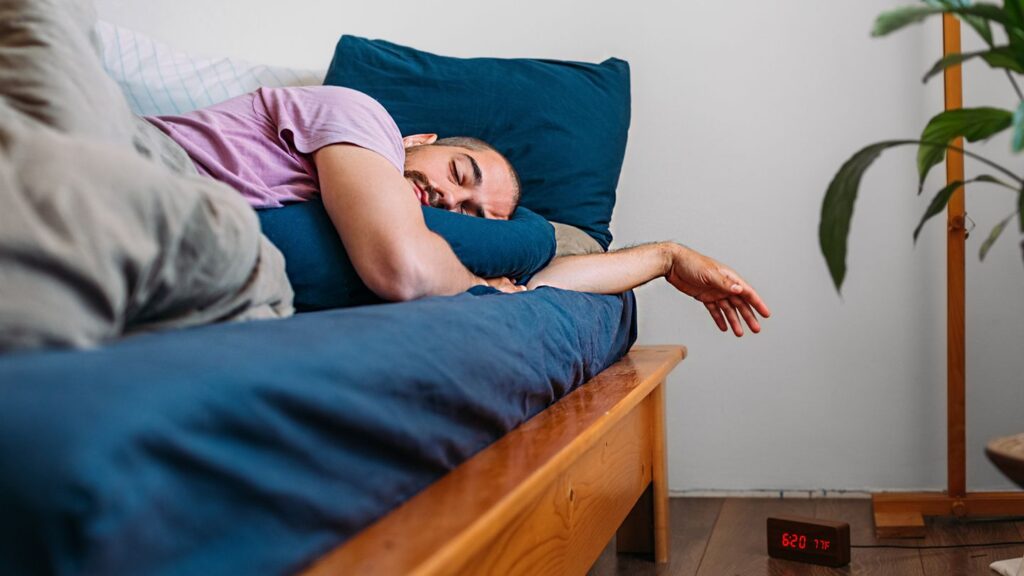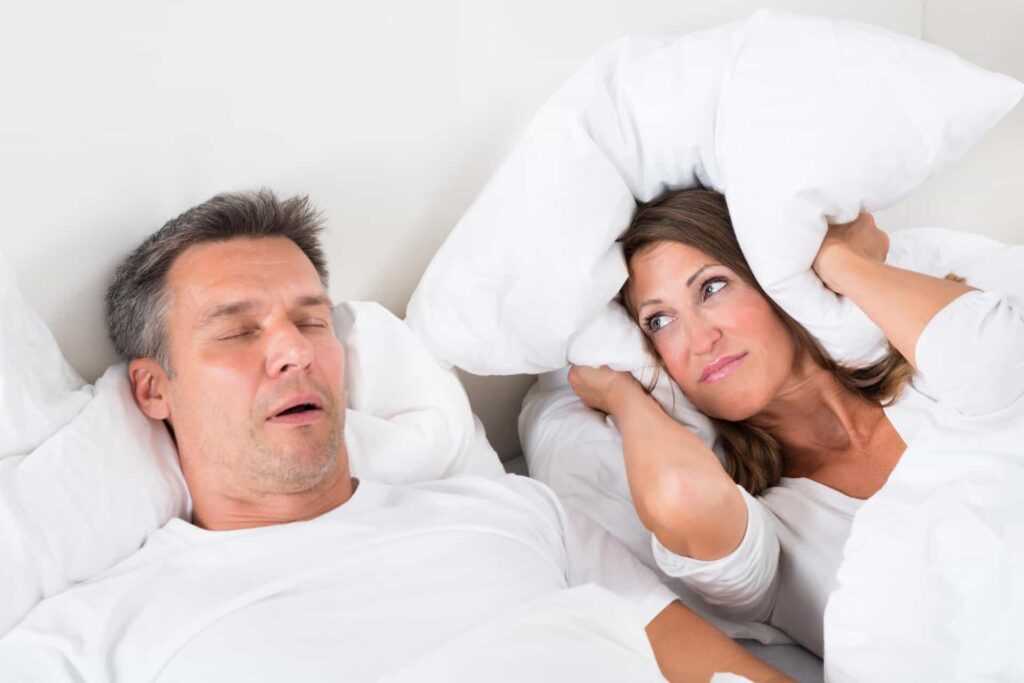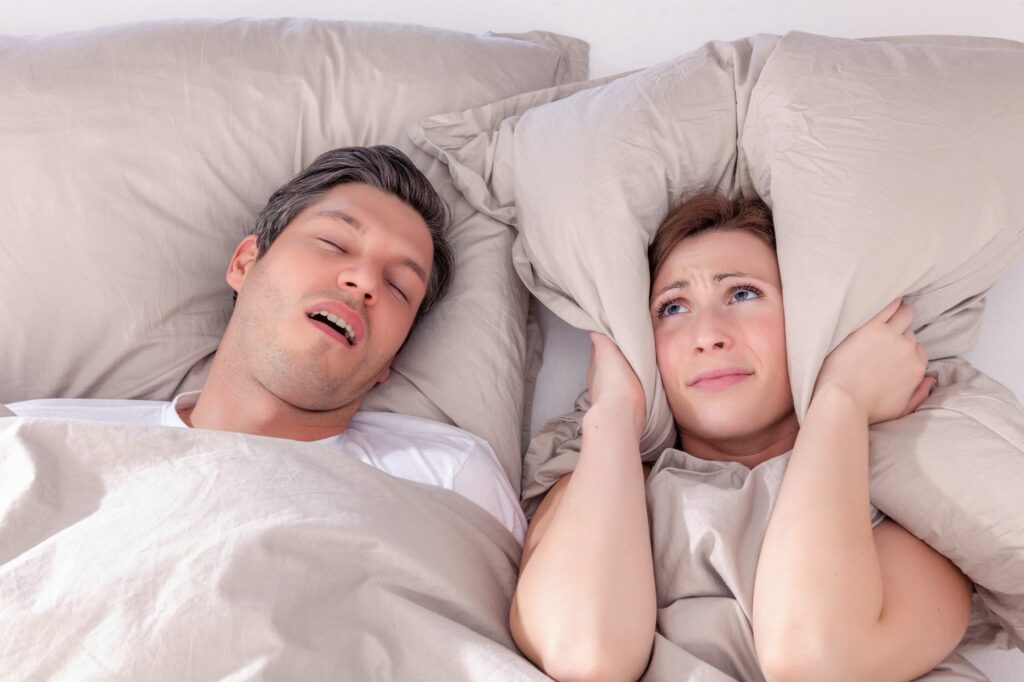Sleep apnea is a common sleep disorder that affects millions of people worldwide. It is characterized by pauses in breathing during sleep, which can lead to a variety of health implications if left untreated. In order to understand the condition better, it is important to explore the different types of sleep apnea and their implications on overall well-being.
Defining Sleep Apnea: An Overview
Sleep apnea is a sleep disorder characterized by repeated pauses in breathing or shallow breaths during sleep. These pauses, known as apneas, can last anywhere from a few seconds to a few minutes. They occur due to a partial or complete obstruction in the airway, leading to reduced airflow and disrupted sleep patterns. The most common type of sleep apnea is obstructive
Sleep apnea (OSA), occurs when the muscles in the back of the throat fail to keep the airway open. Click here to get what’s new in ResMed mask technology.
The Science Behind Sleep Apnea
The science behind sleep apnea lies in the anatomy of the respiratory system. When we sleep, the relaxation of the muscles can cause the airway to narrow. In individuals with sleep apnea, this narrowing can become complete, leading to a cessation of breathing. This triggers a fight-or-flight response in the body, causing the individual to wake up briefly to resume normal breathing. These awakenings, often unnoticed, disrupt the sleep cycle and prevent restful sleep.
During these episodes of interrupted breathing, the body experiences a drop in oxygen levels, which can have detrimental effects on various organs and systems. The brain, in particular, is highly sensitive to changes in oxygen levels. Prolonged periods of reduced oxygen supply to the brain can result in cognitive impairments, memory problems, and difficulty concentrating. This can significantly impact an individual’s daily functioning and overall quality of life.

Furthermore, the repeated disruptions in sleep caused by sleep apnea can lead to excessive daytime sleepiness and fatigue. This can affect a person’s ability to perform daily tasks, concentrate at work or school, and even increase the risk of accidents, especially while driving or operating machinery.
Prevalence and Impact of Sleep Apnea
Sleep apnea is more common than you might think. It affects approximately 25 percent of men and 10 percent of women worldwide. The prevalence increases with age and is more prevalent in individuals who are overweight or obese. Sleep apnea not only affects the quality of sleep but also has a significant impact on overall health and well-being.
One of the major concerns associated with sleep apnea is its link to cardiovascular diseases. Studies have shown that individuals with untreated sleep apnea have a higher risk of developing conditions such as hypertension (high blood pressure), heart disease, and stroke. The repeated episodes of oxygen deprivation and the subsequent stress on the cardiovascular system can contribute to the development and progression of these conditions.
Moreover, sleep apnea can have a negative impact on mental health. Chronic sleep deprivation and disrupted sleep patterns can lead to mood disturbances, including irritability, depression, and anxiety. These mental health issues can further exacerbate the daytime fatigue and cognitive impairments experienced by individuals with sleep apnea.
In conclusion, sleep apnea is a complex sleep disorder that goes beyond just interrupted breathing during sleep. It involves intricate physiological mechanisms, impacts various aspects of health, and can significantly affect an individual’s overall well-being. Understanding the science and prevalence of sleep apnea is crucial for early detection, proper diagnosis, and effective management of this condition.
Types of Sleep Apnea: A Closer Look
When it comes to sleep apnea, there is no one-size-fits-all. There are several types of sleep apnea, each with its own distinct characteristics and causes. Understanding the differences between them is crucial for proper diagnosis and treatment.
Obstructive Sleep Apnea
Obstructive sleep apnea (OSA) is the most common type of sleep apnea, affecting millions of people worldwide. It occurs when the soft tissue in the back of the throat collapses during sleep, blocking the airway and causing a pause in breathing. This pause in breathing can last for a few seconds to a minute, and it can happen multiple times throughout the night. OSA is often accompanied by loud snoring, gasping for air, and frequent awakenings, which can disrupt the quality of sleep and leave the person feeling tired and groggy during the day.
There are several risk factors associated with OSA, including obesity, smoking, alcohol consumption, and certain anatomical factors such as a narrow airway or enlarged tonsils. It is more common in men than women, and the risk increases with age. If left untreated, OSA can lead to serious health problems, including high blood pressure, heart disease, stroke, and even an increased risk of accidents due to daytime sleepiness.

Central Sleep Apnea
Central sleep apnea (CSA) is less common than OSA, accounting for about 10% of all sleep apnea cases. Unlike OSA, which is caused by a physical blockage of the airway, CSA occurs when the brain fails to send the proper signals to the muscles that control breathing. As a result, the individual stops breathing for brief periods during sleep. Unlike OSA, CSA is not usually accompanied by snoring.
CSA can be caused by various factors, including certain medical conditions such as congestive heart failure, stroke, and brainstem injury. It can also be a side effect of certain medications, such as opioids or sedatives. The symptoms of CSA can vary, but they often include shortness of breath, difficulty staying asleep, and excessive daytime sleepiness. If left untreated, CSA can lead to complications such as heart problems and reduced quality of life.
Mixed Sleep Apnea
Mixed sleep apnea, also known as complex sleep apnea, is a combination of both obstructive and central sleep apnea. It occurs when the individual experiences both blockage of the airway and a lack of respiratory effort from the brain. Mixed sleep apnea is often more severe than either OSA or CSA alone.
Diagnosing mixed sleep apnea can be challenging, as it requires a comprehensive evaluation of the individual’s sleep patterns and breathing. Treatment options for mixed sleep apnea may include continuous positive airway pressure (CPAP) therapy, oral appliances, or surgery, depending on the severity and underlying causes.
In conclusion, sleep apnea is a complex sleep disorder that can have significant impacts on an individual’s health and well-being. By understanding the different types of sleep apnea and their unique characteristics, healthcare professionals can provide more targeted and effective treatment options for those affected by this condition.
Symptoms and Diagnosis of Sleep Apnea
Recognizing the symptoms of sleep apnea is crucial for timely diagnosis and treatment. While the specific symptoms may vary depending on the type and severity of sleep apnea, there are some common signs to look out for.
Sleep apnea is a sleep disorder characterized by pauses in breathing or shallow breaths during sleep. These pauses can last for a few seconds to minutes and can occur multiple times throughout the night. The most common type of sleep apnea is obstructive sleep apnea, where the airway becomes partially or completely blocked during sleep. Central sleep apnea, on the other hand, occurs when the brain fails to send proper signals to the muscles that control breathing.
Common Symptoms Across All Types
Excessive daytime sleepiness is one of the hallmark symptoms of sleep apnea. People with sleep apnea often feel tired and fatigued during the day, even after a full night’s sleep. This can significantly impact their daily activities and quality of life.
Loud snoring is another common symptom. The sound of snoring occurs when the airway becomes narrowed or blocked, causing vibrations as the air passes through. It can be disruptive to both the person with sleep apnea and their bed partner, leading to restless nights and strained relationships.
Sudden awakenings accompanied by a choking or gasping sensation are also frequently experienced by individuals with sleep apnea. These awakenings occur when the brain senses a lack of oxygen and prompts the body to wake up momentarily to restore proper breathing. This can be a frightening experience and may cause anxiety or difficulty falling back asleep.
Morning headaches are another symptom that can indicate the presence of sleep apnea. The repeated interruptions in breathing during sleep can lead to decreased oxygen levels in the blood, which can result in headaches upon waking. These headaches are often described as dull and throbbing, and they can persist throughout the day.
Dry mouth is a common complaint among people with sleep apnea. The constant airflow obstruction and mouth breathing can cause the mouth to become dry and parched. This can be uncomfortable and may lead to other oral health issues, such as tooth decay and gum disease.
Difficulty concentrating and memory problems are also frequently reported by individuals with sleep apnea. The fragmented sleep caused by frequent awakenings can disrupt the normal sleep cycles, leading to cognitive impairments. This can affect a person’s ability to focus, remember information, and perform daily tasks efficiently.
If you or a loved one are experiencing these symptoms, it is important to consult with a healthcare professional for further evaluation. Sleep apnea can have serious health consequences if left untreated, including an increased risk of high blood pressure, heart disease, stroke, and diabetes.
Diagnostic Procedures and Tests
Diagnosing sleep apnea typically involves a sleep study, also known as polysomnography. This test records various physiological parameters during sleep, including brain activity, eye movements, heart rate, and respiratory effort. It helps determine the presence and severity of sleep apnea, as well as the type.
During a sleep study, the individual spends a night in a sleep laboratory, where their sleep is monitored by specialized equipment. Electrodes are placed on the scalp, face, chest, and legs to measure brain waves, eye movements, muscle activity, heart rate, and oxygen levels. A belt is also placed around the chest and abdomen to monitor breathing patterns.
The data collected during the sleep study is analyzed by sleep specialists to assess the frequency and duration of breathing disturbances, as well as other sleep-related parameters. This information is crucial in determining the appropriate treatment plan for individuals with sleep apnea.
In some cases, a home sleep apnea test may be used as an alternative to an in-lab sleep study. This portable device is worn at home and records similar physiological parameters to assess the presence of sleep apnea. However, it may not provide as comprehensive data as an in-lab sleep study and is typically reserved for individuals with a high likelihood of having moderate to severe obstructive sleep apnea.
Overall, the symptoms of sleep apnea should not be ignored, as early diagnosis and treatment can greatly improve the quality of life for individuals affected by this sleep disorder. Seeking medical attention and undergoing the necessary diagnostic procedures are essential steps towards managing sleep apnea effectively.

Implications of Sleep Apnea
Sleep apnea is not just a nuisance; it can have serious implications for both physical and mental health.
Physical Health Consequences
Untreated sleep apnea can increase the risk of developing several health conditions. Regular interruptions in breathing during sleep can strain the cardiovascular system, leading to high blood pressure, heart disease, and stroke. Sleep apnea has also been associated with an increased risk of metabolic disorders, such as type 2 diabetes and obesity. Moreover, chronic fatigue and daytime sleepiness can affect overall well-being and increase the risk of accidents.
Mental Health Consequences
Sleep apnea can take a toll on mental health as well. The constant disruptions in sleep can contribute to mood disorders such as depression and anxiety. Additionally, sleep apnea has been linked to cognitive impairments, memory problems, and difficulties with concentration and attention. Restoring regular and restful sleep is crucial for maintaining optimal mental health.
Social and Lifestyle Implications
The impact of sleep apnea extends beyond individual health. Persistent snoring and frequent awakenings can disrupt the sleep of bed partners, potentially leading to relationship difficulties. Sleep apnea can also affect social and professional interactions due to excessive daytime sleepiness and reduced cognitive functioning.
Treatment Options for Sleep Apnea
The good news is that sleep apnea is treatable. There are several options available to manage the condition effectively.
Lifestyle Changes and Home Remedies
In mild cases of sleep apnea, lifestyle modifications can make a significant difference. Losing weight, avoiding alcohol and sedatives before bedtime, and sleeping in a side position can help prevent airway obstruction. Elevating the head of the bed and practicing good sleep hygiene, such as following a regular sleep schedule, can also improve sleep quality.
Medical Treatments and Therapies
In moderate to severe cases, medical interventions may be necessary. Continuous positive airway pressure (CPAP) therapy is considered the gold standard for treating sleep apnea. It involves wearing a mask over the nose or mouth that delivers a constant flow of air, keeping the airway open during sleep. Other options include bilevel positive airway pressure (BiPAP) and automatic positive airway pressure (APAP) devices.
Surgical Options for Sleep Apnea
In some cases, surgery may be recommended to correct anatomical abnormalities that contribute to sleep apnea. Adenotonsillectomy, uvulopalatopharyngoplasty (UPPP), and maxillomandibular advancement are some surgical procedures that can help widen the airway and reduce the severity of sleep apnea. Surgical intervention is generally considered when other treatment options have failed or when specific anatomical factors are present.
Understanding the different types of sleep apnea and their implications is crucial for effective management and improved quality of life. If you suspect that you or someone you know may have sleep apnea, it is important to seek medical advice for proper diagnosis and individualized treatment options. Remember, a good night’s sleep is essential for overall health and well-being.

